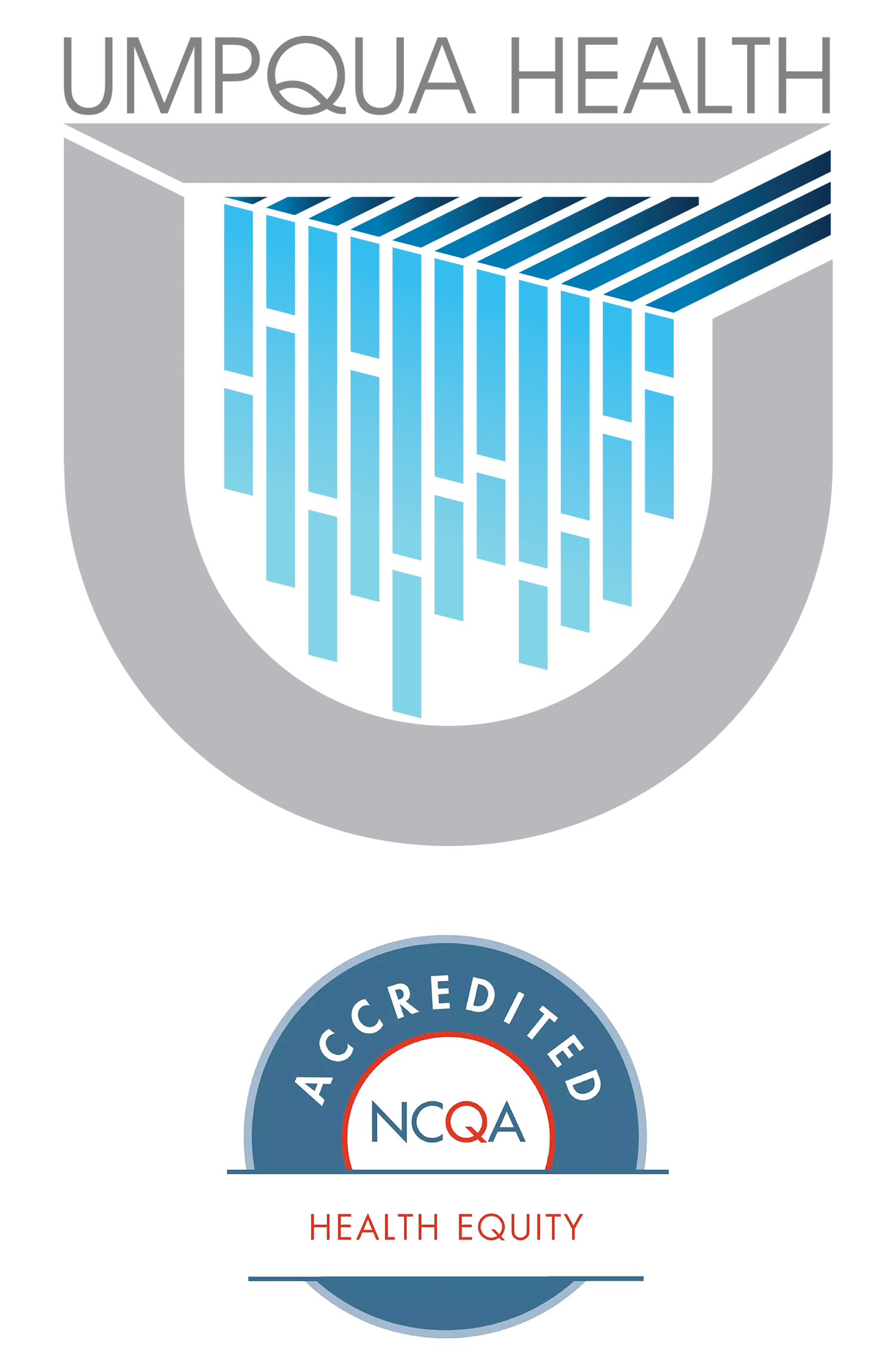Provider Newsletter December 2019
 Practice Tactics
Practice Tactics
UHA Awarded Five-Year Contract
The Oregon Health Authority (OHA) has awarded Umpqua Health Alliance the full five-year 2020-2024 Oregon Health Plan contract in Douglas County. UHA was previously awarded a provisional one-year contract, but has provided further information and documentation to OHA to demonstrate UHA’s ability to meet all CCO 2.0 requirements. Throughout the entire CCO 2.0 process, UHA submitted more than 2,000 pages of documentation to OHA. This included work for the first phase of a readiness review process, where UHA received complete ratings in 87 of the 93 elements and was rated progress sufficient to start operations in the other six elements, the second highest score in the state. UHA’s full five-year contract will start January 1, 2020.
Practice Efficiency Tip
Umpqua Health Alliance offers providers the ability to submit, check the status and manage your prior authorization (PA) requests online. By signing up for access to our Community Integration Manager (CIM), you can eliminate paperwork and faxing associated with the authorization process. You will also have direct email access to our Member Services, Prior Authorization, and Claims teams that can assist you with questions of member eligibility, and monitoring PA and claims status’. UHA is encouraging all in network providers to gain access to CIM as soon as possible as it will be a requirement in the first quarter of 2020.
To sign up for this feature, please email support@phtech.com or call 503-584-2169 option 2. You can get further information by contacting PriorAuthorizations@umpquahealth.com or by calling UHA at 541-673-1462.
Reminder
Currently, Umpqua Health Alliance is only a type A and B CCO, but starting in 2020, UHA will be an all-class CCO, covering types A through G. The implication for practices is that some UHA members will not be covered for the services they provide. For example, for a PCP or specialist, a member with only E, F or G coverage will not be reimbursed by UHA for their services.
Fortunately, greater than 95% of UHA members have coverage under type A and B, but it is still important for practices to check CIM for the type of CCO enrollment a new patient has to ensure proper reimbursement.
 Clinical Corner
Clinical Corner
Changes to The Prioritized List in 2020
The prioritized list undergoes its annual update effective January 1st, 2020. There are usually some minor revisions that occur in May and October as well. The new list and a description of the changes are now available on the OHA website here. There are a lot of addition and deletions of ICD-10 diagnosis codes and CPT procedure codes, in addition to some notable new and revised guideline notes for coverage. The Medicaid waiver approved by CMS does not allow a decrease in funding lines, so Lines 1-469 remain as covered by OHP.
This month I wanted to note 2 Guideline Notes that will affect coverage for dermatologic conditions.
There is expanded coverage for Acne and Hidradenitis Suppurativa. Be sure to review the criteria that follows and provide documentation that supports them in any request for treatment or referral.
GUIDELINE NOTE 65, SEVERE CYSTIC ACNE
Lines 452,522
Acne is only included on Line 419 if it is severe, defined as the presence of the following characteristics: persistent or recurrent inflammatory nodules and cysts AND ongoing scarring. Otherwise, acne diagnoses are included on Line 514.
Note that acne with recurrent abscesses or communicating sinuses is covered according to Guideline Note 132 ACNE CONGLOBATA AND ACNE FULMINANS.
GUIDELINE NOTE 198, HIDRADENITIS SUPPURATIVA
Lines 419,514
Hidradenitis suppurativa is included on Line 419 only for moderate to severe disease (e.g. Hurley Stage II or Hurley Stage III); otherwise this condition is included on Line 514.
Initial treatment with adalimumab is limited to adults whose disease has not responded to at least a 90-day trial of conventional therapy (e.g., oral antibiotics), unless such a trial is not tolerated or contraindicated. Treatment with adalimumab after 12 weeks is only included on Line 419 for patients with a clear evidence of response, defined as:
- A reduction of 25% or more in the total abscess and inflammatory nodule count, AND
- No increase in abscesses and draining fistulas.
Currently, referral to dermatology for consultation on dermatoses or skin lesions are generally approved to aid in diagnosis and provide advice for treatment. Often after consultation, the diagnosis that is established falls on an unfunded line, so further care by the consultant is denied. Any ongoing follow-up is then considered the responsibility of the PCP.
We will discuss other changes to the Prioritized List in next month’s newsletter.
On the Lookout
School Exclusion Day on February 19, 2020
Immunizations are required by state law for children and students in attendance at public and private schools, preschools, childcare facilities and Head Start programs in Oregon. Nearly every facility that provides care for a child outside the home requires immunizations or a medical or non-medical exemption to stay enrolled.
You can help your patients who are parents of school-age children by reminding them and reviewing the child’s immunization record.
A Certificate of Immunization Status form can be found online here, or requested from the child’s school or childcare facility.
If the parent receives an exclusion notice, they should contact their primary care provider’s office, local health clinic, or pharmacy* to have the child immunized. Children who are not up-to-date on their immunizations by February 19, 2020 will be excluded from school until their immunizations are up-to-date or until they have a valid medical or nonmedical exemption**.
The following link is to a flyer listing options where immunizations can be obtained in Douglas County: http://douglaspublichealthnetwork.org/wp-content/uploads/2019/12/Where_To-Go.pdf
*Pharmacies can immunize children 7 years and older without a prescription, or younger with a prescription. Parents should contact their neighborhood pharmacy for availability of vaccines and details. Important: Please note that children on UHA/DCIPA or DMAP cannot be vaccinated at a pharmacy. They must get their immunizations at a clinic.
**The following link can be used to claim a non-medical exemption: (https://www.oregon.gov/oha/ph/PreventionWellness/VaccinesImmunization/GettingImmunized/Pages/non-medical-exemption.aspx)
Implicit bias awareness
Everyone has implicit biases. Bias is a prejudice in favor of or against one thing or another. Explicit bias is expressed directly, we are aware of it, and it is conscious. Implicit bias is the opposite: indirect, unaware, and sub-conscious.
 We are naturally conditioned to accept stereotypes without a second thought, and much of our behavior is driven by stereotypes. The human body sends 11 million bits of sensory information per second to our brain. We use our unconscious mind to deal with most of it, because our conscious mind can handle only 40 or 50 bits per second according to researchers. As a result of this “unaware” mind, we sometimes slight people who are perceived as different from us, without us realizing it. These “microagressions”, which are brief and commonplace verbal, behavioral, or environmental indignities, communicate ideas that can be interpreted as hostile, derogatory, or prejudicial. These indignities can affect the way some people receive or seek health care. For, instance, black women are assumed to tolerate pain better than white women, so they are less often offered pain-reducing treatment. If you felt slighted at your last medical appointment, would you think about going back?
We are naturally conditioned to accept stereotypes without a second thought, and much of our behavior is driven by stereotypes. The human body sends 11 million bits of sensory information per second to our brain. We use our unconscious mind to deal with most of it, because our conscious mind can handle only 40 or 50 bits per second according to researchers. As a result of this “unaware” mind, we sometimes slight people who are perceived as different from us, without us realizing it. These “microagressions”, which are brief and commonplace verbal, behavioral, or environmental indignities, communicate ideas that can be interpreted as hostile, derogatory, or prejudicial. These indignities can affect the way some people receive or seek health care. For, instance, black women are assumed to tolerate pain better than white women, so they are less often offered pain-reducing treatment. If you felt slighted at your last medical appointment, would you think about going back?
Fortunately, our minds are malleable, and we can be taught to be aware of our biases and correct our behaviors. Our implicit biases can be measured by Implicit Association Tests, which are predictors of our behavior. These tests have been available for years; 21 million tests have been taken worldwide, and the tests measure over fourteen attitudes and stereotypes. It is recommended that we take the tests for our behaviors in the workplace. Race and skin tone tests should be taken. There are IATs that cover other areas of bias. A minimum of three tests should be taken to have confidence in the results. The goal is to become aware of the implicit biases that one has, then to consciously adapt one’s behavior in those situations where the bias is likely to be expressed. Tests can be found online through Harvard University’s Project Implicit® here or here.
 Winter Preparedness
Winter Preparedness
The snowstorm we all experienced early this year tested the resiliency of our community to the extreme. This is a reminder that the best we can do is to prepare our homes and families for emergencies. Because of the number of people who were caught off guard, many people needed help from their friends, neighbors and community. Many people stepped up with food, heat, lodging, and health care. But many other people were mostly on their own and suffered from the cold, hunger, lack of transportation, lack of communication, and the dark. Please prepare yourselves for emergencies and check on your neighbors when something does happen.
Douglas Public Health Network recommends keeping a preparedness kit at home and work. There are many resources for how to plan for emergencies and disasters available on these websites:
https://www.ready.gov/september
http://douglaspublichealthnetwork.org/index.php/emergency-preparedness/
https://www.oregon.gov/oha/PH/PREPAREDNESS/PREPARE/Pages/index.aspx
 Information in this section is provided by Douglas Public Health Network. If you have any questions about the content, please contact the DPHN office at (541) 440-3571.
Information in this section is provided by Douglas Public Health Network. If you have any questions about the content, please contact the DPHN office at (541) 440-3571.
 CME for Thee
CME for Thee
Did you know that our website has a list of community resources that could benefit your patients? Click here for classes and resources for your patients, including Chronic Pain, Smoking Cessation, and Diabetes.
We apologize for canceling our Advanced Directive training rescheduled for December 9th. We will provide an announcement about another opportunity soon.
Free technical assistance for clinics: Alcohol & Opioid Management
The OHA Transformation Center is partnering with the Oregon Rural-based Practice Research Network (ORPRN) to offer two technical assistance opportunities to help clinics with screening, brief intervention and referral to treatment (SBIRT):
- The ANTECEDENT project is a 3-year study funded through the federal Agency for Healthcare Quality and Research. The project will help participating clinics address unhealthy alcohol use in primary care.
- The PINPOINT Collaborative is a 3-year collaboration funded through the federal Centers for Disease Control and Prevention. The collaborative will help participating clinics address chronic pain management and opioid prescribing.
OHA encourages all clinics to participate and receive this free technical assistance. To learn more about ANTECEDENT and PINPOINT, To learn more, please read the flyer.
Questions? Contact Alissa Robbins or the ANTECEDENT program.





